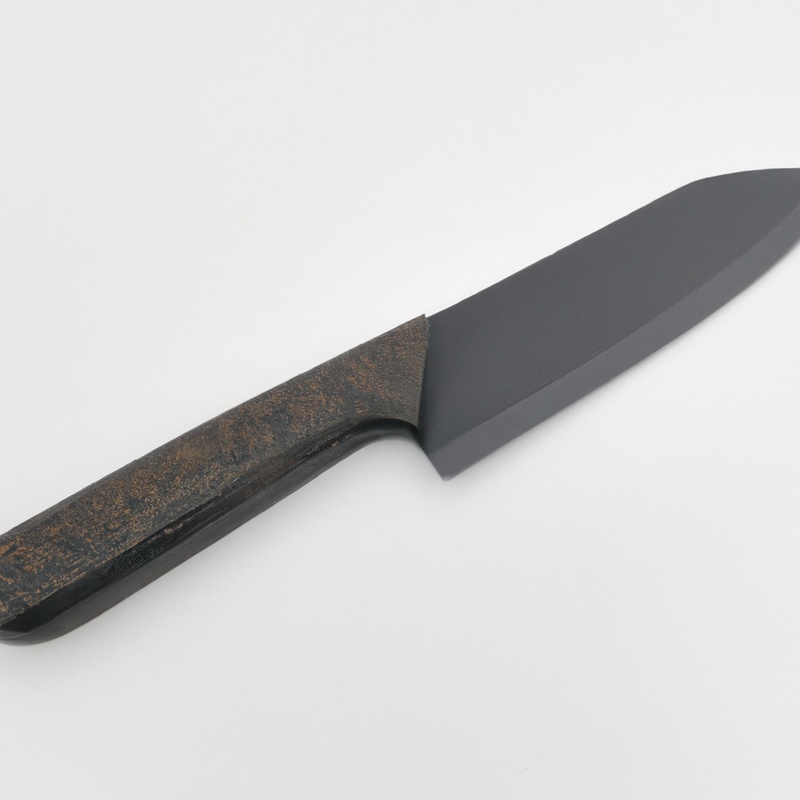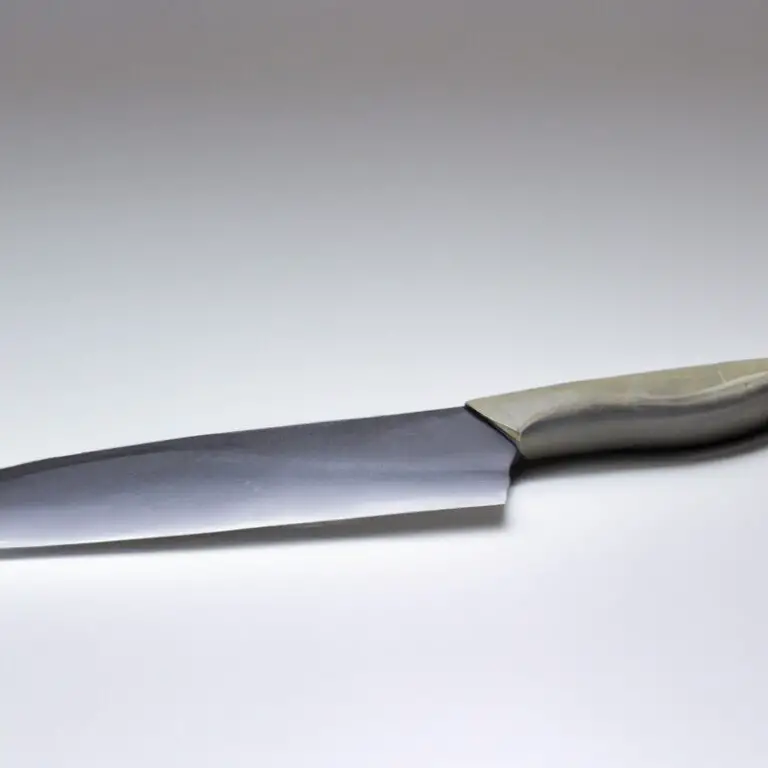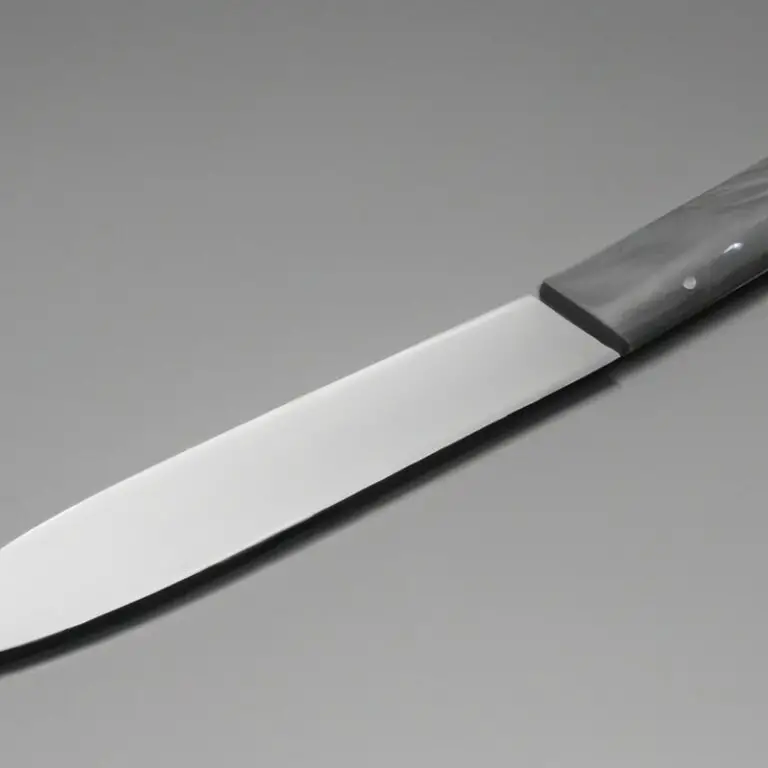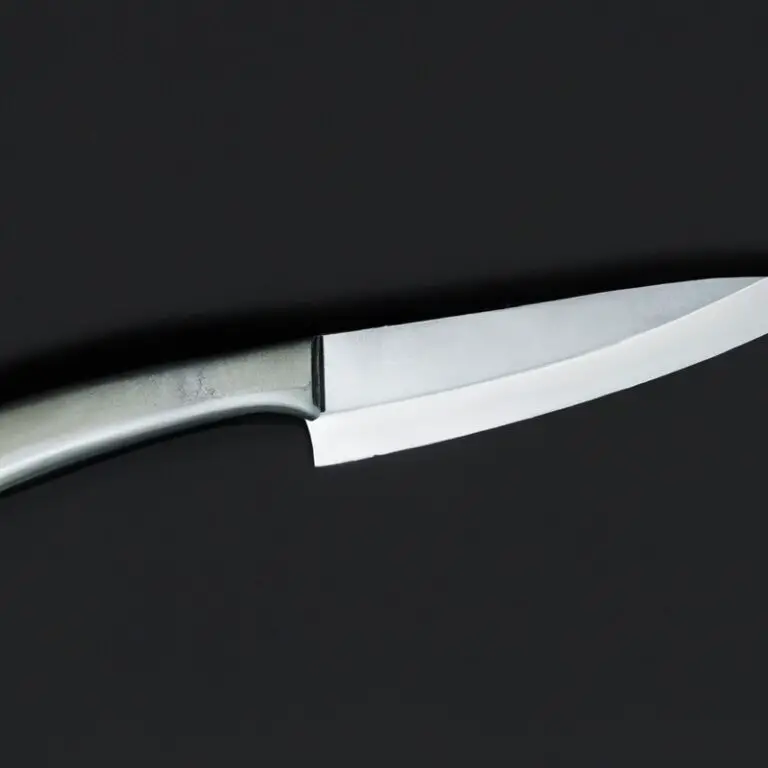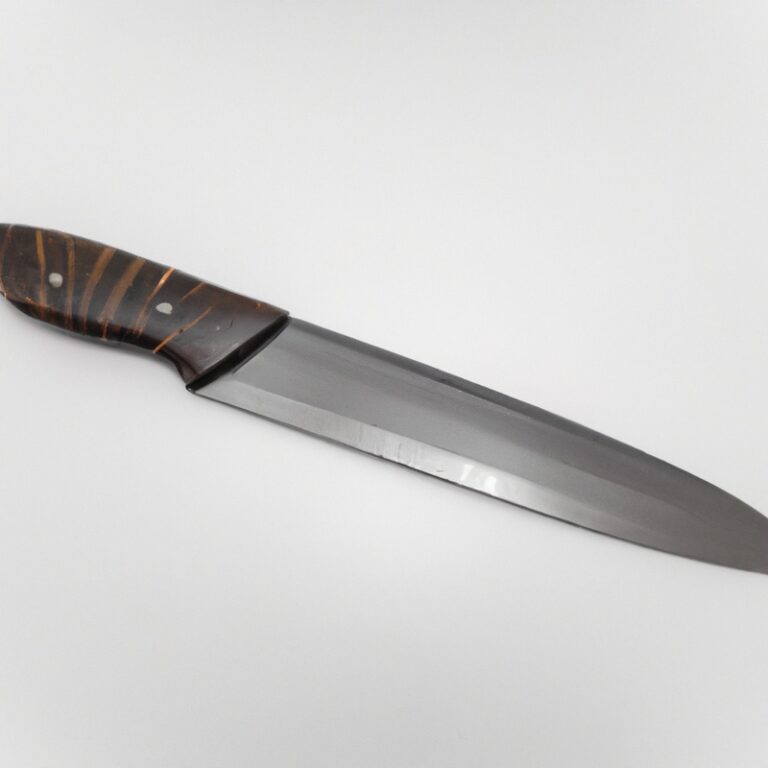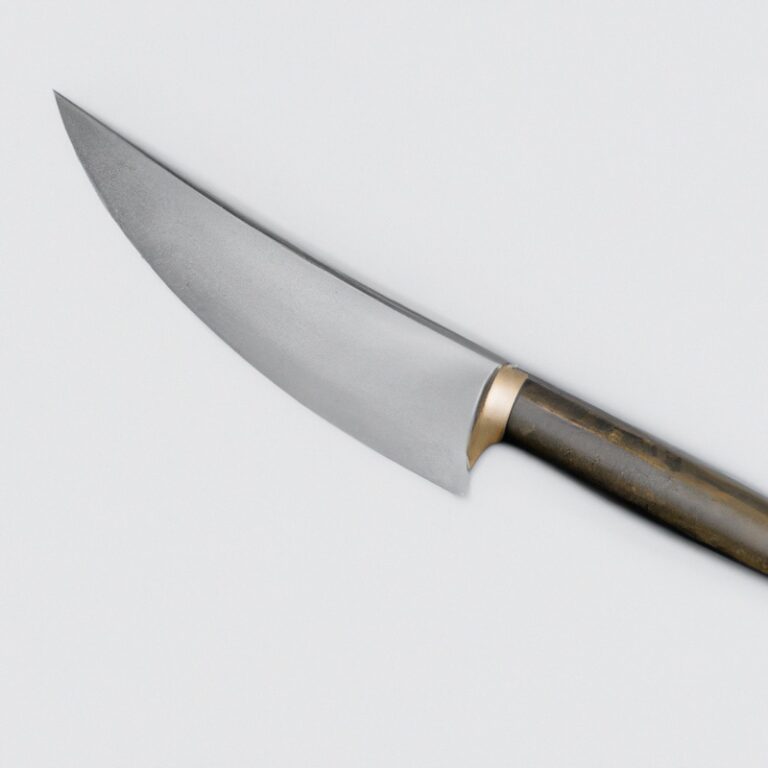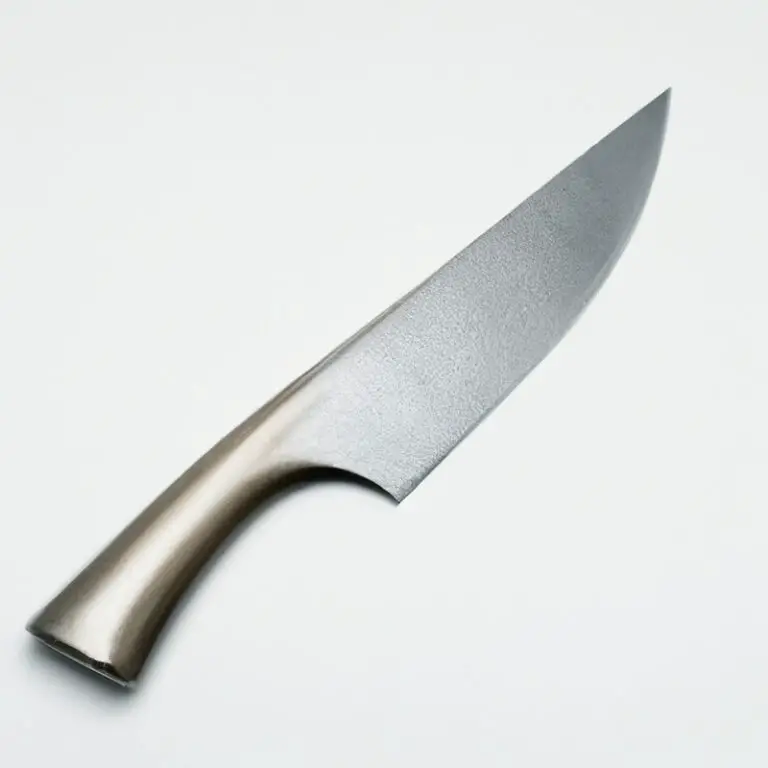How To Properly Clean a Gyuto Knife After Use For Longevity Of Use
Key Takeaways:
- Cleaning your Gyuto knife after use is crucial to maintain its sharpness and longevity.
- Use warm water and a soft sponge or cloth to safely remove any remaining food debris from the blade.
- Dry the knife immediately after cleaning to prevent corrosion or rusting.
- Regularly oil the blade to protect against moisture and preserve its quality over time.
Have you ever used your Gyuto knife and left it dirty for days? Improper cleaning of your knife can lead to rust, stains, and even damage the blade.
In this article, I will be sharing my expertise on how to properly clean a Gyuto knife after use.
From understanding the anatomy of a Gyuto knife to the tools needed for cleaning, and the dos and don’ts of cleaning your knife, this guide will provide you with a comprehensive and beginner-friendly approach to maintaining the longevity of your Gyuto knife. So let’s dive in and learn how to keep your knife in tip-top shape!
Cleaning a Gyuto knife after use is essential for maintaining its sharpness and longevity. Here is a table for the proper cleaning technique.| Step | Description |
| 1. | Rinse the blade under hot water to remove any food debris or residue. |
| 2. | Add a small amount of dish soap to a sponge or soft cloth and gently scrub the blade, avoiding the sharp edge. |
| 3. | Rinse the blade under hot water again to remove any remaining soap. |
| 4. | Dry the blade thoroughly with a soft cloth or towel. |
| 5. | Apply a thin layer of mineral oil to the blade to prevent rust and corrosion. |
Understanding the Anatomy of a Gyuto Knife: A Guide for Proper Cleaning
To properly clean a Gyuto knife, it’s essential to understand its anatomy. The Gyuto knife has a sharp blade and is made of high-quality stainless or carbon steel.
The blade is composed of a cutting edge, spine, tip, and heel.
The handle is made of different materials such as wood, plastic, or metal, and it has a tang that connects it to the blade. Properly cleaning the blade requires removing any food debris or stains by running it under warm water, using a soft-bristled brush to scrub away any particles, and washing it with mild soap.
It’s important to dry the blade immediately and avoid soaking it in water or using abrasive sponges.
Beginner’s Guide to Properly Maintaining Your Gyuto Knife
If you’re looking to get more out of your Gyuto knife, proper maintenance is essential. Not only will proper care help extend the life of your blade, but it will also help maintain its sharpness and effectiveness.
Here are some tips to help you properly maintain your Gyuto knife:
- Keep it clean: After every use, wipe down your Gyuto knife with a damp cloth and mild detergent. Avoid soaking the knife in water, as this can cause damage over time.
- Store it properly: When not in use, store your Gyuto knife in a sheath or blade guard. This can help prevent damage to the blade and keep it sharp.
- Sharpen regularly: A dull knife is more dangerous than a sharp one. Regular sharpening can help maintain the blade’s sharpness and effectiveness.
- Avoid putting it in the dishwasher: The high heat and chemicals used in the dishwasher can cause damage to the blade and handle.
By following these simple tips, you can help extend the life of your Gyuto knife and maintain its effectiveness.
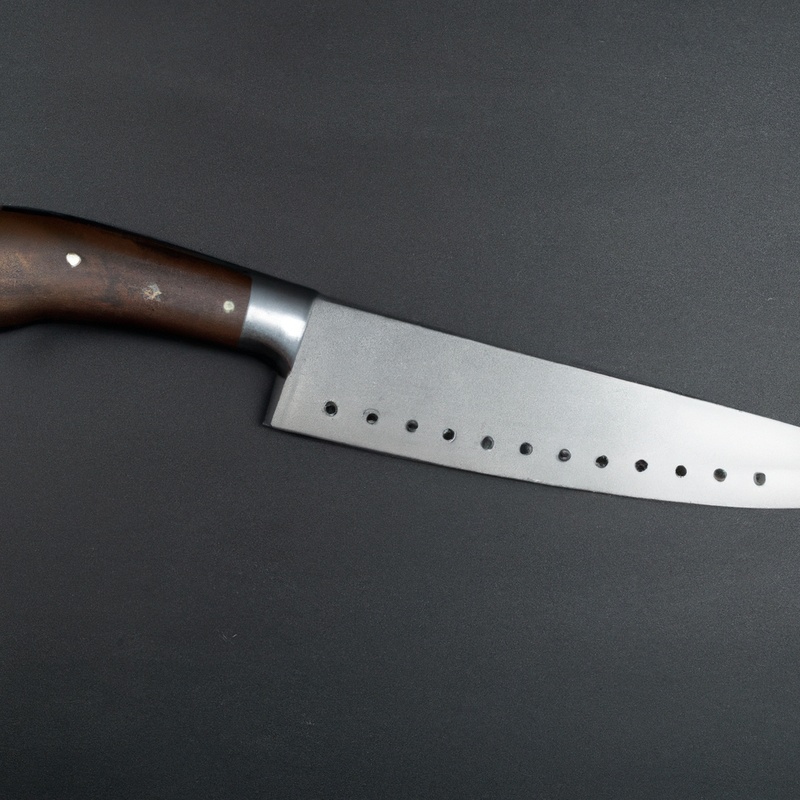
Importance of Properly Cleaning Your Gyuto Knife After Every Use
Properly cleaning your Gyuto knife after every use is crucial for several reasons. Firstly, it helps to maintain the sharpness of the blade, preventing it from becoming dull and ineffective over time.
Secondly, it reduces the risk of bacterial contamination from leftover food particles on the blade, which can cause food poisoning.
Thirdly, regular cleaning prevents rust and corrosion from forming on the blade, preserving its longevity and overall quality. Finally, cleaning your Gyuto knife after use is a basic safety measure to prevent accidental cuts or injuries when handling it later.
In summary, regularly cleaning your Gyuto knife after use is essential for maintaining its sharpness, hygiene, physical state, and your safety.
Tools You Need for Properly Cleaning Your Gyuto Knife
To properly clean your Gyuto knife, you will need the following tools:
- Mild dish soap – to effectively clean the blade without causing any damage.
- Soft sponge or cloth – to avoid scratches on the blade while cleaning.
- Warm water – lukewarm water is the best for rinsing the blade after cleaning.
- Cutting board – to protect the blade from coming into contact with hard surfaces while cleaning.
- Drying towel – to dry the blade surface after cleaning.
- Sharpening stone – to sharpen the blade when needed.
- Rust eraser – to remove any rust spots that may appear on the blade.
It is essential to use these tools to prevent any damage to your Gyuto knife while cleaning it, ensuring the longevity of the knife.
The Dos and Don’ts of Cleaning Your Gyuto Knife: A Comprehensive Guide
Dos:
- Wipe the blade with a clean, damp cloth or sponge immediately after use to remove any food residue.
- Use mild dish soap and warm water to clean the knife.
- Use a soft-bristled brush to gently scrub the blade if there are any stubborn stains.
- Dry the blade immediately with a clean towel to prevent water spots and rust.
- Apply a small amount of food-grade oil to the blade to protect it from rust and corrosion.
- Store the knife in a dry and safe place away from moisture and other kitchen tools.
Don’ts:
- Do not leave the knife soaked in water for an extended period.
- Avoid using abrasive scouring pads or steel wool to clean the blade, as it can cause scratches.
- Do not put the knife in the dishwasher, as it can damage the blade and handle.
- Don’t use bleach or chlorine-based cleaning products on the knife, as it can cause rust or corrode the metal.
- Avoid touching the sharp edge of the blade while cleaning to prevent injuries.
Remember to always handle your Gyuto knife with care and follow these dos and don’ts to maintain its quality and longevity.
How Often Should You Clean Your Gyuto Knife?
It is recommended to clean your Gyuto knife after every use to maintain its sharpness and longevity. Any food residue left on the blade can cause corrosion or damage the edge.
Cleaning your Gyuto knife with warm soapy water and a soft sponge immediately after usage is the best practice.
Dry it with a clean towel and store it in a safe place. Avoid leaving your knife in the sink or dishwasher, as it can lead to rust or dullness.
If you use your knife frequently, it is advisable to clean and sharpen it every 1-2 weeks.
Washing your knife regularly also ensures hygiene and prevents the accumulation of bacteria on the blade. Remember, a well-maintained Gyuto knife can last for years.
How to Properly Hand Wash Your Gyuto Knife to Avoid Damage
To properly hand wash your Gyuto knife, follow these steps:
- Rinse the knife under warm running water to remove any food particles and debris.
- Apply a small amount of dish detergent to the blade and scrub gently with a soft sponge or cloth.
- Rinse the blade thoroughly with warm water to remove all soap residue.
- Dry the blade with a soft towel, being careful not to leave any water spots.
- Store the knife in a safe place, preferably in a knife block or sheath to prevent damage or injury.
Avoid using abrasive sponges, harsh detergents, or soaking the knife in water for an extended period as this can damage the blade and handle. Additionally, make sure to always wash and dry your knife immediately after use to prevent rust or corrosion.
Proper hand washing techniques will help ensure the longevity and performance of your Gyuto knife for years to come.
Expert Tips for Cleaning a Gyuto Knife with Rust
Expert Tips for Cleaning a Gyuto Knife with Rust:
- Create a paste made of baking soda and water. Spread it over the rusted areas of the knife, then let it sit for a few minutes.
- Use a soft-bristled toothbrush or sponge to scrub away the rust. Be gentle and avoid harsh scrubbing to prevent further damage to the knife’s surface.
- Rinse the knife with warm water and dry it immediately with a clean towel.
- Apply a small amount of vegetable oil or mineral oil to the blade and wipe it off with a cloth. This will help prevent future rust from forming.
- For persistent rust stains, use a specialized rust remover specifically designed for kitchen knives. Apply it carefully as per the instructions given on the packaging.
Remember, rust stains are more than just a cosmetic issue. They can affect the cutting abilities of the knife and lead to corrosion.
Promptly removing every spot of rust is essential to protect your investment in a timeless, high-quality knife like the Gyuto.
How to Effectively Remove Stubborn Stains from Your Gyuto Knife
Stubborn stains on your Gyuto knife can be a hassle to remove, but there are a few effective methods you can try.
- Baking soda and water: Make a paste using baking soda and water, and apply it to the stains. Let it sit for a few minutes, then scrub the area with a soft-bristled brush. Rinse the knife with water and dry it thoroughly.
- Vinegar: Soak a paper towel in white vinegar and wrap it around the stained area. Let it sit for 15-20 minutes, then rub the stains with a soft brush. Rinse and dry your knife as normal.
- Lemon and salt: Cut a lemon in half and dip the cut side into some salt. Rub it over the stains and let sit for a few minutes. Scrub the area with a soft brush and rinse your knife with water.
Remember to always be gentle when cleaning your Gyuto knife, as harsh scrubbing or using abrasive materials can damage the blade. If the stains are particularly stubborn, it’s best to take your knife to a professional for cleaning.
A Complete Guide to Properly Storing Cleaned Gyuto Knife to Avoid Damage
Properly storing a cleaned Gyuto knife is crucial for maintaining its quality and longevity. Here’s a complete guide for storing your knife to avoid damage:
- Dry the knife thoroughly with a clean cloth.
- Use a knife sheath or blade guard to protect the blade from scratches and dings.
- Store the knife in a dry and cool place, away from moisture and heat.
- If storing in a drawer, keep the knife separated from other utensils and ensure the blade is not touching any hard surfaces.
- Consider investing in a magnetic knife holder or knife block with vertical slots for storage to avoid damage to the blade’s edge.
By following these steps, you can ensure your Gyuto knife retains its sharpness and quality for years to come.
Mistakes to Avoid When Cleaning Your Gyuto Knife: A Must-Read
Mistakes in cleaning your Gyuto knife can harm its longevity and effectiveness. Here are some common mistakes that you should avoid when cleaning your knife:
1. Using abrasive materials such as steel wool: Such materials can cause scratches on your Gyuto knife and even remove its protective coating.
- Putting your knife in the dishwasher: Dishwashers use high heat which can damage the knife’s handle and blade.
- Storing your knife when it’s still wet: Storing your knife without drying it thoroughly can lead to rust formation and bacterial growth.
- Using harsh detergents: Chemicals in detergents can cause damage to the blade and handle’s materials
- Scrubbing the blade too hard: Avoid using too much pressure while cleaning the blade as it may dull the edge.
By avoiding these mistakes, you can ensure that your Gyuto knife is well-maintained and has a longer lifespan.
Step-by-Step Guide to Sharpening a Gyuto Knife at Home After Cleaning
To sharpen your Gyuto knife at home, follow these simple steps:
- Get a sharpening stone – a high-quality stone is recommended for best results.
- Lubricate the sharpening stone with a few drops of oil or water, depending on the type of stone.
- Hold the knife at a 15-20 degree angle, with the blade edge facing away from you.
- Swipe the blade along the stone, using a consistent and steady pressure.
- Repeat this process on the other side of the blade until you have a burr.
- Flip the knife over and repeat the process on the opposite side to remove the burr.
- Finish by honing the edge of the blade with a leather strop or honing rod.
- Test the sharpness of the blade by cutting a piece of paper or shaving a thin slice from a tomato.
Remember to clean the sharpening stone and the knife after use to maintain their longevity. Sharpen your knife regularly, depending on how often you use it.
With these simple steps, you can maintain the sharpness of your Gyuto knife and allow it to perform its best.
How to Sanitize Your Gyuto Knife to Keep It Clean and Safe
To sanitize your Gyuto knife, you will need to follow these steps:
- Clean your knife with soap and water and dry it thoroughly with a clean cloth.
- Use a mixture of one part vinegar and four parts water to spray onto the blade. Be sure to cover the entire knife.
- Let the knife sit with the vinegar solution on it for five minutes. This will kill any harmful bacteria.
- Rinse the knife thoroughly with water and dry it completely using a clean cloth.
- Store your knife in a clean, dry, and safe place.
Alternatively, you can use a food-safe sanitizing spray or wipe to sanitize your knife after cleaning it. Always remember to follow the manufacturer’s instructions for the sanitizing product you choose to use.
Proper sanitization of your Gyuto knife will help ensure that it remains clean, safe, and free of harmful bacteria.
Quick Fixes for a Dull Gyuto Knife: Tips and Tricks for Reviving Its Sharpness
Quick Fixes for a Dull Gyuto Knife: Tips and Tricks for Reviving Its Sharpness If you notice that your Gyuto knife is not performing as it should, it may have lost its sharpness. But no need to worry – there are a few simple ways to revive its sharpness.
- Honing: A honing rod can help bring back the sharpness of your Gyuto knife by realigning the blade’s edges. Hold the honing rod vertically and run the blade along the rod at a 20-degree angle. Repeat several times on each side of the blade.
- Sharpening Stone: A sharpening stone is a more aggressive method to sharpen a dull Gyuto knife. Wet the stone beforehand and run the blade along the stone at the appropriate angle. Start with a coarser grit and work your way up to a finer grit stone until your knife feels sharp.
- Electric Knife Sharpener: This is an easy and quick solution to sharpen a dull Gyuto knife. Follow the instructions provided by the manufacturer to sharpen your knife effectively.
- Whetstone: A whetstone is a traditional and effective method of sharpening a dull Gyuto knife. Begin by soaking the whetstone for a few minutes, then hold the knife at the correct angle as you draw it across the stone in a back-and-forth motion. Repeat on both sides of the blade until it sharpens.
Remember, it’s essential to clean and maintain your Gyuto knife to keep it performing at its best. By following these simple tips and tricks, you can easily revive its sharpness in no time.
How to Protect Your Gyuto Knife from Rust: Best Practices for Maintenance and Cleaning
To protect your Gyuto knife from rust, it’s important to follow some best practices for maintenance and cleaning. Firstly, always make sure to dry your knife thoroughly after each use and don’t leave it in a damp or humid place.
Avoid using harsh chemicals or abrasive materials to clean your knife, as they can damage the blade’s surface.
Instead, use a soft cloth and a mild detergent to gently clean the blade. You can also apply a thin layer of food-grade oil to the blade after cleaning to help prevent rust formation.
Finally, store your Gyuto knife in a safe and dry place, such as a wooden block or a knife case, and avoid storing it with other metal objects which increases the likelihood of rust formation.
By following these best practices, you can help maintain your Gyuto knife’s sharpness, durability, and longevity.
The Proper Way to Dry Your Gyuto Knife after Cleaning
Once you have cleaned your Gyuto knife, it is important to dry it thoroughly to prevent any moisture from damaging the blade. Follow these steps to properly dry your Gyuto knife:
- Use a clean, dry towel to wipe off any excess moisture from the blade and handle.
- Hold the blade at a slight angle and carefully run the towel over the edge to remove any excess water.
- Use a paper towel or a soft cloth to dry the blade completely. Make sure every surface of the blade is dry.
- If necessary, use a cotton swab or a toothbrush to dry hard-to-reach areas such as the handle and the tang.
- Once you have dried your Gyuto knife, make sure to store it in a dry place away from moisture.
It is important to avoid air-drying your Gyuto knife as this can result in water spots and rust formation. By following these tips, you can ensure that your Gyuto knife remains in top condition and lasts for years.
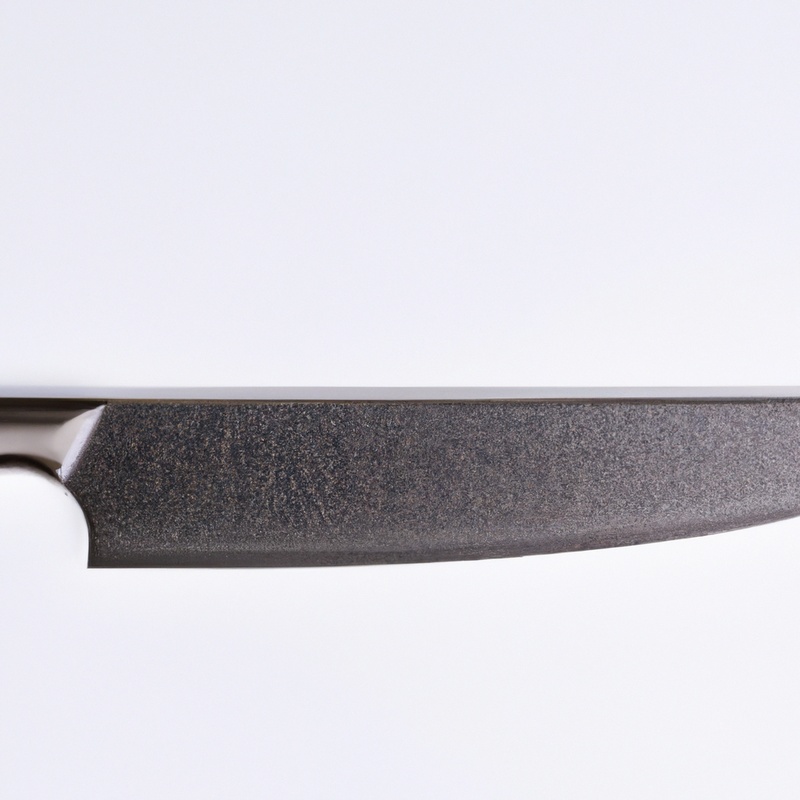
Tips for Cleaning Gyuto Knife Handles to Improve Longevity and Durability
To clean the Gyuto knife handle, use a cloth and mild soap solution to wipe away any dirt or grime. Avoid using abrasive cleaners or wire brushes as they can scratch the handle’s surface.
Rinse the handle with warm water and dry it with a soft, clean cloth.
Applying a thin layer of mineral oil to the handle can help prevent cracking or drying out over time. Be sure to store the knife in a dry place to avoid damage.
Proper cleaning and maintenance of the Gyuto knife handle can extend its lifespan and ensure its durability.
How to Maintain the Quality of Your Gyuto Knife Through Proper Cleaning Techniques
Proper cleaning techniques are essential to maintaining the quality of your Gyuto knife. After each use, make sure to remove any debris by wiping the knife with a damp cloth.
Avoid using abrasive scrubbers or chemicals that can damage the blade.
Hand washing your knife with warm water and mild soap is the best way to clean it. Make sure to dry your knife thoroughly after cleaning it to prevent rust from forming.
To maintain the longevity of your knife, store it in a safe place away from moisture and extreme temperatures.
By following these simple steps, you can keep your Gyuto knife sharp, clean, and ready for the next use.
How to Gauge the Sharpness of Your Gyuto Knife: Expert Suggestions
To gauge the sharpness of your Gyuto knife, experts suggest performing the paper test. Hold a sheet of paper and make a slicing motion with your knife.
If it cuts smoothly through the paper without tearing it, your knife is sharp.
If it tears or struggles to cut through, it needs sharpening. Another method is the tomato test.
Try slicing a tomato with your knife.
If it cuts through the tomato effortlessly without crushing it, your knife is sharp. However, if it squishes or struggles to cut through, it needs to be sharpened.
Remember that a dull knife can be dangerous to use and can cause injuries.
How to Know if Your Gyuto Knife Needs Professional Sharpening Services
If your Gyuto knife starts to feel dull and requires frequent honing, it’s an indication that it needs professional sharpening. Another sign of a dull knife is that it loses its ability to slice through ingredients smoothly and accurately.
You may also observe that you apply more pressure when cutting through ingredients, and it becomes difficult to cut through tougher ingredients like meat.
Additionally, you can test your knife’s sharpness by performing the paper test. Hold a sheet of paper and try slicing through it with your knife.
If the knife blade cuts through the paper with no resistance, then it’s sharp enough.
However, if you feel the knife dragging and creating jagged edges, it’s an indication that it’s dull and needs sharpening. Lastly, inspect the knife blade to see if it has any visible nicks, chips, or bends, affecting the knife’s sharpness.
In such instances, it is best to take it to a professional to avoid causing more damage while trying to sharpen it at home.
Overall, keep track of how frequently you need to hone your knife and gauge how it performs while cutting through ingredients. If you notice any changes, it may be time to take it to a professional for sharpening.
Final Verdict
Properly cleaning and maintaining your Gyuto knife after each use is crucial to ensure its longevity and optimal performance. By following the dos and don’ts of knife cleaning, using the right tools, and avoiding common mistakes, you can protect your investment and extend the life of your knife.
Remember to also properly store your cleaned knife to avoid damage and consider professional sharpening services if needed.
With these expert suggestions and practical tips, you can confidently clean your Gyuto knife and keep it in top shape for many years to come.

